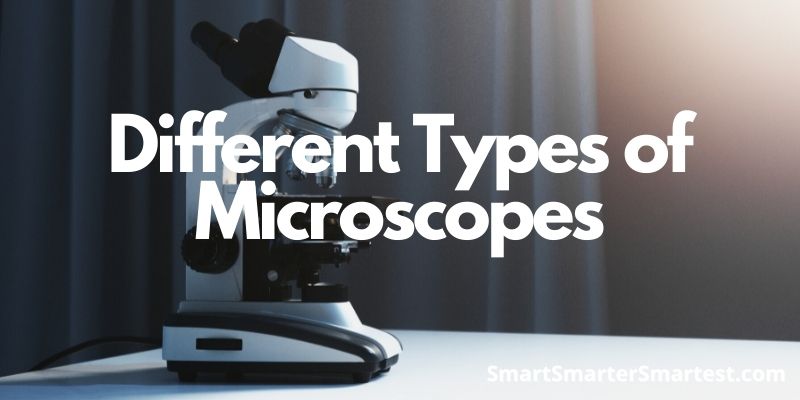In this article you will learn about the 5 varieties of microscopes. Each type is used to solve different issues. You will learn what each microscope is used for as well as who uses each type. You will see that under the information provided for each microscope is a detailed image captured by that specific microscope.

5 Different Types of Microscopes
- Stereo Microscope
- Compound Microscope
- Inverted Microscope
- Metallurgical Microscope
- Polarizing Microscope
Stereo Microscopes
You use this type of microscope to view a range of items that could fit into your hand. Stereo microscopes can magnify an object from 10x to 40x magnification and can produce 3D images (“stereo” images). High schools often use this microscope for dissection projects. You can also use this microscope for coin collecting, for quality control, in the manufacturing industry, and for science and botany. The stereo microscope offers both reflected and transmitted illumination. You can also use it to study an opaque sample.
These are the types of articles you would view using a stereo microscope:
Flowers, insects, frog anatomy, metal parts, coins, plastic parts, wires, printed circuit boards and fabric weaves.
Compound Microscope
The compound microscope can be both binocular and monocular since it has two lenses. The additional lens is used to magnify the image provided by the first lens. Having two lenses also allows it to provide better magnification than that provided by a simple microscope. As a bright field microscope, it allows your specimen to be lit from beneath.
Although compound microscopes provide a high magnification of 1000x, the resolution’s not so great. The 1000x magnification allows you to clearly view objects that are too tiny to see with your naked eye; this includes individual cells. The specimens are generally small with a bit of transparency. Compound microscopes while being very useful are less expensive than others. For this reason they’re used in biology classrooms and other places such as research labs.
Inverted Microscopes
There are two types of inverted microscopes: Metallurgical and biological. When using the inverted microscope you will be able to place a petri dish containing the specimen onto a level stage. The objective lenses are usually housed underneath the stage. It is used more for live cell imaging, cell biology, microbiology, developmental biology and neuroscience. You would use this type of microscope more often for research to study and analyse cells and tissues, especially living cells.
The biological inverted microscope provides 40x, 100x and even 200x and 400x magnification. It is used to view living specimens, placed in petri dishes.
Metallurgical inverted microscopes serve to examine larger areas for faults or fractures at a high magnification. While both microscopes are similar in terms of the magnification they provide, the main difference is that when using this microscope, specimens are not put into a petri dish. Instead the sample’s smooth side is prepared in a way that allows it to be placed on the stage, flat down. This sample is also known as a pluck and it is usually polished.
Metallurgical Microscopes
High power metallurgical microscopes are used to view opaque objects. Light is unable to pass through these objects. The difference between these microscopes and typical biological ones are that these use the microscopy principals of reflected light. As a result they are often used to view metallurgical samples and other opaque items such as rocks, ceramics and different plastics.
Polarizing Microscope
The polarising microscope makes use of polarised light together with transmitted light and/or reflected light to analyse rocks, minerals and chemicals. These types of microscopes are used mainly by geologists and petrologists. The pharmaceutical industry and chemists also make use of them every day.
They have an analyser and a polariser. The analyser works out how much light and determines the direction of light needed to illuminate the specimen. The polariser controls how much light waves pass through it.
It focuses the diverse wavelengths of light to reflect onto one plane, which makes it perfect for looking at birefringent materials.